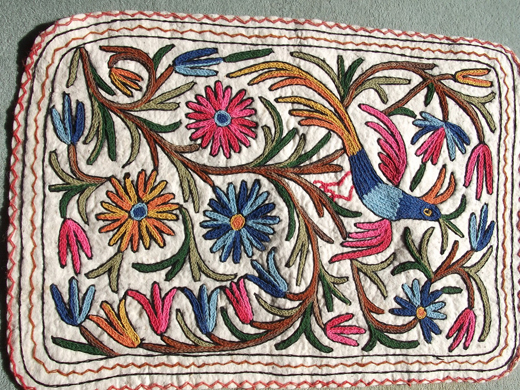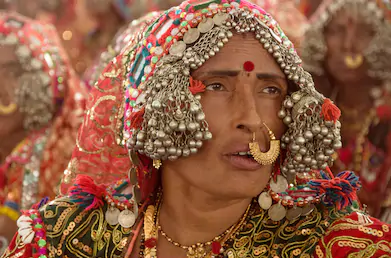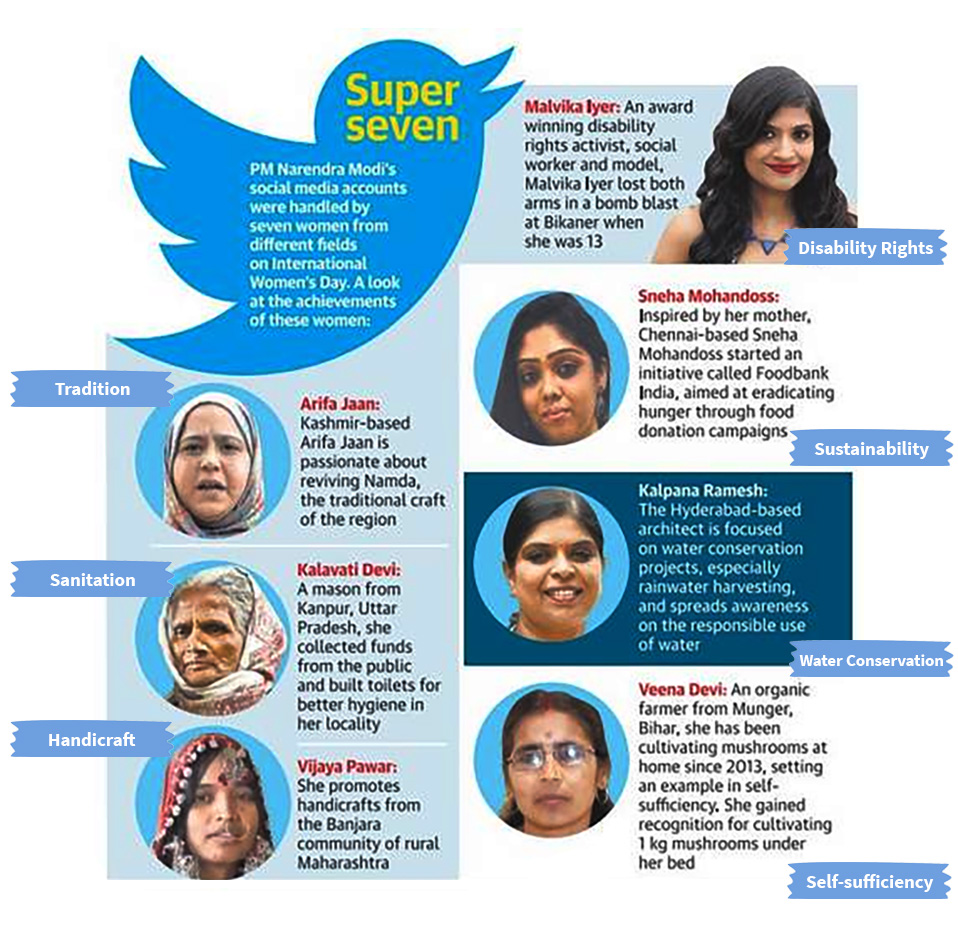Important Facts For Prelims
Super Seven
- 09 Mar 2020
- 4 min read
Why in News
Prime Minister of India on 8th March 2020 marked International Women’s Day by handing over control of his social media accounts to seven women achievers.
Key Points
- Namda Traditional Art

- Namda is a local term used for traditional felted wool floor coverings, made out of a coarse variety of wool.
- Namda comes from the root word Namata (Sanskrit for woollen stuff).
- Namda making is practised as a craft in several cultures, especially in the countries throughout Asia, viz. Iran, Afghanistan and India.
- Srinagar in Kashmir and Tonk in Rajasthan are the two major namda making centres in India.
- In India, it is known to have come from Iran and was actively promoted in the state under the patronage of the Mughal monarchs and the Rajput royals.
- Rich hues and exquisite designing are the hallmarks of the handcrafted Namda.
- Unique themes and floral patterns provide the themes for these masterpieces and flowers and leaves, buds and fruits are the essence of the designs.
- Namda is a local term used for traditional felted wool floor coverings, made out of a coarse variety of wool.
- Banjara Community
- The word ‘banjara’ is derived from Vanaj meaning to trade, and Jara meaning to travel.
- Banjara (sometimes called Gypsies) is a nomadic tribe of India and were the vital supply chain for villages.

- They were commercial nomads, that is, hundreds of years ago they distributed salt and other essential items to interior villages, but they did have a connection with the land.
- The Banjaras were among many tribes that resisted the British attempt to seize their lands for plantations and enrol them as labour.
- Their constant revolt frustrated the British, and in 1871, the Banjaras and several other tribes were brought under the Criminal Tribes Act.
- The community was denotified in the 1950s but were listed under the Habitual Offenders Act, 1952.
- With roots in Rajasthan, Banjaras now live in several states and are known by different names like Lambada or Lambadi in Andhra Pradesh, Lambani in Karnataka; Gwar or Gwaraiya in Rajasthan etc.
- They are listed in various States as Scheduled Caste (SC), Scheduled Tribe (ST), Other Backward Class (OBC) and as Vimukta Jati/denotified tribes.
- The language of Banjara is known as “Gorboli” “Gor mati Boli” or “Brinjari” an independent dialect.
- The dialect falls in the category of Indo-Aryan language.
- Foodbank India
- The India Food Banking Network (IFBN) is evolving an ecosystem for food security interventions to support thousands of feeding programmes in India by bringing the government, private sector and NGOs together to fight hunger and malnutrition in India.
- Vision: To have a hunger and malnutrition free India which falls in line with the Sustainable Development Goals (SDG 2- Zero Hunger by 2030).
- It aims to achieve the vision by establishing a strong and efficient network of FoodBanks throughout the country so that every district has access to at least one FoodBank by 2030.
- It is a multi-stakeholder partnership of global, domestic and local community partners who contribute voluntarily to support the humanitarian and development projects.





